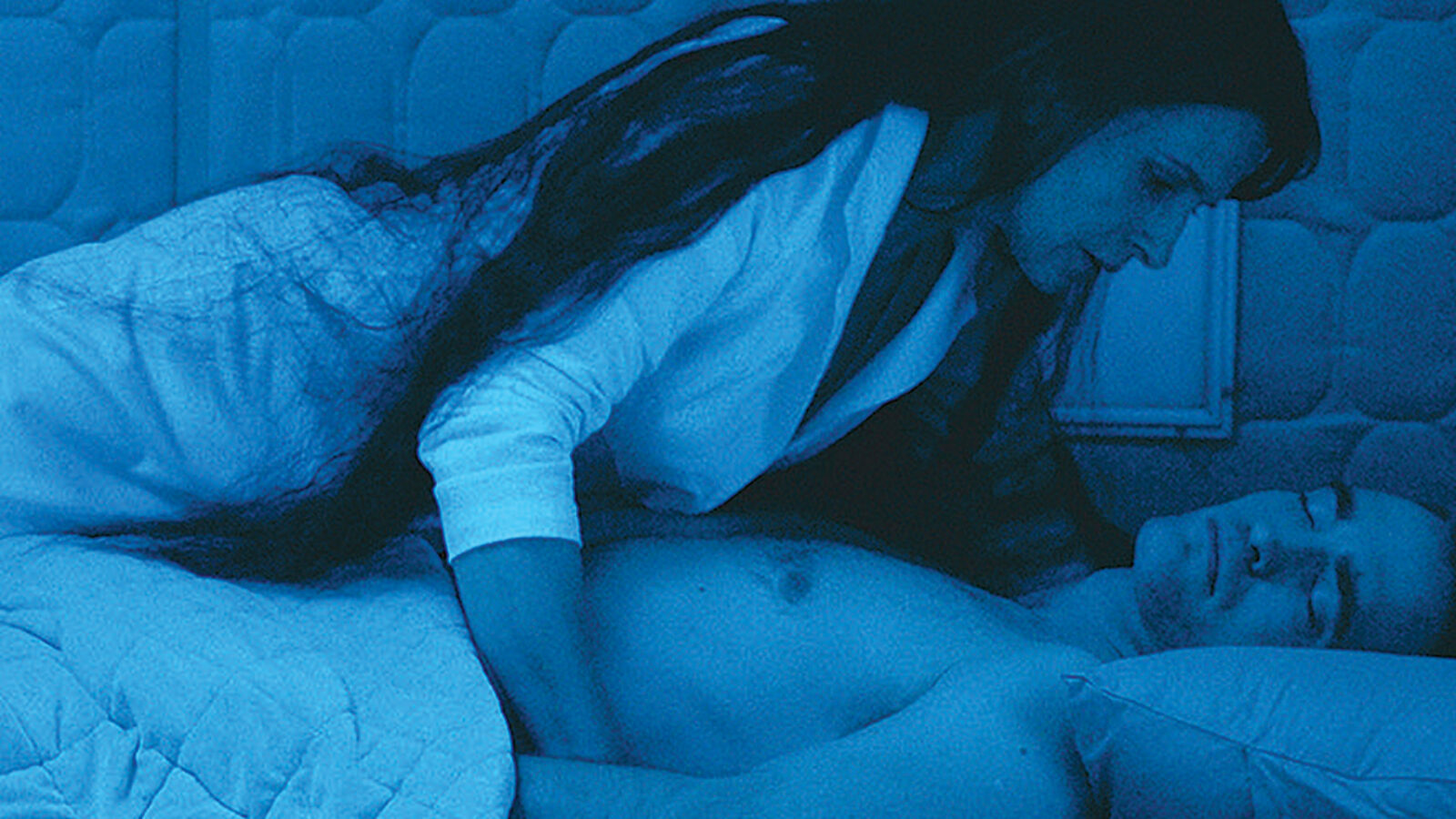
The Point of No Return
Filmmakers leave a trail of unmade projects behind them, and among the most famous and long-deferred of these dream movies there are some recurring motifs. There are the science-fiction films: Alejandro Jodorowsky’s Dune, of course, or Alain Resnais’s unlikely teaming with Stan Lee on The Monster Maker. Then there are the Bible-based movies, like Carl Theodor Dreyer’s “Jesus film” or Robert Bresson’s adaptation of the Book of Genesis or Paul Verhoeven’s biopic of his historical Jesus of Nazareth. With High Life, Claire Denis imagined a movie that improbably combines aspects of both types at once—and, more improbably still, she actually made the thing. Set largely aboard an adrift spacecraft, her film has all the expected trappings of science fiction, but Biblical imagery and overtones circulate throughout the work, which begins with a vision of a garden in Edenic lushness, and ends with a suggestion of incest that hearkens back to the story of Adam and Eve, and the necessarily inbred origins of a human race that starts from a single couple.
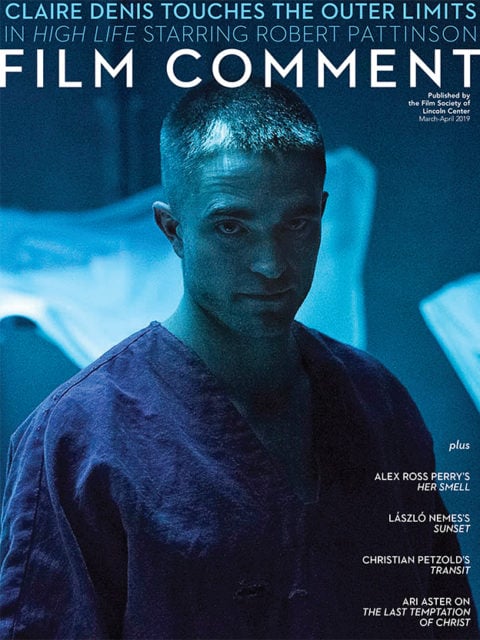
That garden is an oasis of nature aboard the vessel, which we at first discover to have only two occupants—a young man, Monte (Robert Pattinson), and the infant girl he cares for. Aboard the empty ship, its walls marred with the signs of a bloody struggle, Monte goes about his rounds, which include methodically and dutifully jettisoning a cargo of corpses that are taking up space. This in medias res opening is part of an overall narrative structure that suggests film noir: after first locating the protagonist in the wake of some unexplained and evidently fatal incident, Denis shuttles back to a time before the mysterious catastrophe, then eventually returns us with new understanding to the beginning, which in the film’s final chapter we move many years beyond—long enough for that baby to have become a teenager, played by Jessie Ross, who has lived the whole of her life knowing nothing but the chill of space.
The bulk of High Life, however, takes place at an undisclosed point sometime before the fall, with Monte’s crewmates still very much alive and cohabiting the ship with him, all of them overseen by a quack scientist with the slightly screwballish name of Dr. Dibs (Juliette Binoche). They are together tracking a course for a black hole, ostensibly on a mission to discover if the space-time phenomenon can provide an energy source. This distant goal, however, proves to be a pretext, as Dibs is far more preoccupied with repeated attempts to inseminate and impregnate the women on board with turkey baster–grade technology and then to attempt to bring their babies to term. Dibs enjoys an ongoing affair with the captain of the ship (Lars Eidinger), but old-fashioned coupling is strictly verboten for the rank-and-file crew—sperm is collected from the men in a clinical ceremony, while sexual satisfaction is found via a communal assisted masturbation chamber used by men and women alike, which Denis has colloquially referred to as the “Fuck Box.”
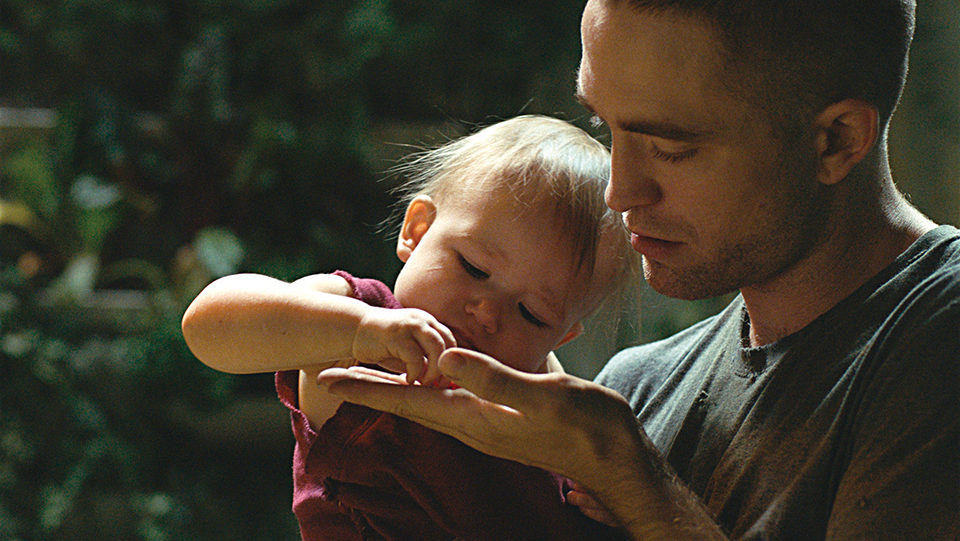
Courtesy of Wild Bunch & A24
The denizens of the ship put up with being treated like imprisoned chattel because, as it transpires, they are actual convicts—a ragtag crew scraped together from earth’s terrestrial prisons and given a second chance in quite literally leaving their bodies to science. (Many of them, it’s revealed, come from death row, while the film’s pre-title sequence condemns them to a narrative death sentence.) A sequestered community of outsiders, their ranks seething with sublimated sexual energy—there’s more than a slight resemblance here to Beau travail, Denis’s 1999 transposition of Herman Melville’s (and Benjamin Britten’s) Billy Budd to a French foreign legion base in Djibouti, a film that likewise ends with its central character released from the terms of his service but by no means free, his sentence to be suspended only by that final, fatal reprieve.
Edenic opening notwithstanding, there is much in High Life to place it nearer to the dystopian than the utopian science-fiction tradition—no knock, this, for who today expects much deliverance from technology? I had just received a text message from Donald J. Trump when I was on my way to sit down with Denis in New York, where the filmmaker was in town for the New York Film Festival screenings of High Life, then recently premiered at the Toronto International Film Festival. This was the first and to date only “Presidential Alert,” a test of the National Wireless Emergency Alert System, which also served as further evidence that, for anyone on the grid, the 45th President was now literally inescapable. “It’s really creepy,” she told me, after I’d explained the hullabaloo. “Like Orson Welles’s War of the Worlds.”
High Life, Denis explains, is not only a science-fiction movie and a bit of Biblical allegory, but also a prison movie, the central voyage a claustrophobic stint in the slammer amid the vastness of interstellar space. “Death row is a sort of desert where you can spend a third of your life,” she says, speaking of her fascination with the persistence of the death penalty in modern democracies, the kernel from which grew High Life. “I was thinking ‘What is right? To be killed immediately or to wait on an uncertain hope?’ I once read in a newspaper, I think it was about the state of Texas, where someone was complaining about the cost of death row, saying ‘Why are these people not working? We feed them. It’s unfair.’ That’s how the idea of using them as guinea pigs came. It was not so far-fetched. I can’t say it’s really a futuristic idea.”
What is right? High Life is a movie steeped in transgressions, and talking about it, Denis reveals herself as an inveterate scanner of crime reportage—she discusses variously the cases of Natascha Kampusch, the Austrian who spent eight years in the cellar of kidnapper Wolfgang Priklopil, disappearing a girl and emerging a woman of 18; of Jacqueline Sauvage, the Frenchwoman who murdered her abusive husband of 47 years in 2012 and, after becoming a media cause célèbre, was pardoned at age 69 by then-president François Hollande; of Thierry Paulin, the Martinique-born serial killer whose story provided the basis for Denis’s I Can’t Sleep (1994).
In High Life, crimes are divided socially into two distinct categories—those committed out of passion, by those who have been marked as criminals, and officially sanctioned atrocities committed routinely in cold blood by those who are their captors. Monte is in stir for a slaying that occurred back in his Southern Gothic, Snopesian boyhood, seen in fleeting flashbacks, for which he has been prescribed eye-for-an-eye retribution. Dibs has been condemned for filicide, while Monte must decide the fate of his own child without a future—for the baby is his, the only success of Dibs’s experiments, sired in a parodic Immaculate Conception. One of the men, played by Ewan Mitchell, a mad dog frustrated by the strict policing of sex, is violently subdued when he attempts to rape one of the women on the crew—a nasty scene, but one whose brutality takes on an odd inflection in this environment where sexual impositions occur routinely under a clinical guise. Such an atmosphere of immersive and total iniquity renders any ethical norms null. Albert Camus’s 1957 essay “Reflections on the Guillotine” seems here pertinent, with its definition of capital punishment as “the most premeditated of murders, to which no criminal’s deed, however calculated it may be, can be compared.”
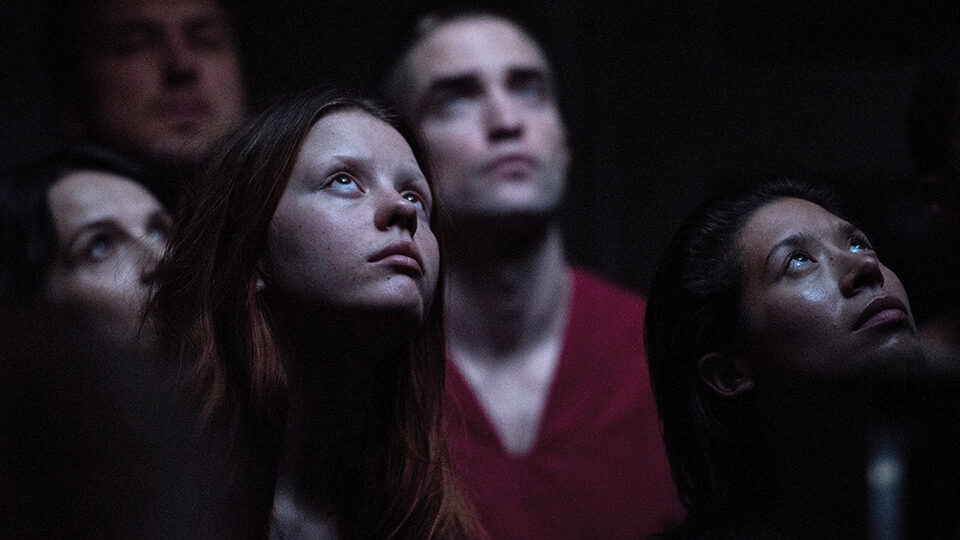
Courtesy of Wild Bunch & A24
When violations and trespasses are the norm, when choice has been chartered and curtailed, the only dignity that remains is in consent—it is this that Monte, monastic and aloof, withholding from the breeding games, attempts to preserve first for himself and then, later, for his daughter. The child knows earth only from images on a screen, with Edward S. Curtis’s In the Land of the Head Hunters glimpsed from the cradle. The use of this 1914 film, set among an indigenous Kwakwaka’wakw community depicted as untouched by contact with European civilization, emphasizes the degree to which the peculiarities of Monte’s situation place him in proximity to the most ancient and universal of taboos with origins reaching back to tribal society, the specter of which arises early on, as we see Monte delivering his daughter a singsong warning against the hazards of eating your own shit. “Recycling piss is not a problem; recycling shit is really a problem,” says Denis. “When he says that, he is knowing there could be a moment where there could be the real taboo.”
The setting for so much lacerating psychic and physical violence has the blunted, padded feeling of an intergalactic playpen. Designed by Icelandic-Danish installation artist Ólafur Eliasson, the prison vessel is all soft, rounded edges and oatmeal tones, seeming to belong to the same future that produced the beanbag time machine in Resnais’s Je t’aime, je t’aime (1968). “In the modern science fiction they use the NASA style in every single [movie], everything’s white and shiny and clean, very militaristic, like a conquest of space,” Denis says. “I wanted exactly the opposite. I wanted it to stay a jail. I wanted everything, even the wall, to be dull, beige and not white. We copied a uniform from a Russian cosmonaut that makes [the passengers] look more like prisoners.”
High Life is unique among Denis’s films in taking place almost entirely in a constructed environment, and the degree to which the film has been designed is clear from its lone opening credit, which juxtaposes the film’s title against the image of dead bodies dropping through space—descending death against High Life. But while High Life is the biggest and most expensive movie that Denis has ever made, it gives little indication of its scale having been bartered for at the sacrifice of freedom—or with the stymieing of the go-with-the-gut intuition that has produced a sui generis body of work, created with enormous craft but a total disdain for the rules of the “well-made” film, elliptical in approach and full of jarring tonal shifts.
It’s not so much that Denis rejects the dictate of eliminating all but the necessary that is preached by grammarians and screenwriting gurus alike, but that she has a radically different conception of what constitutes the necessary, the essential. I ask Denis about an outlier scene in a film otherwise limited to life on the ship or the occasional flashback, which shows us goings-on back on earth, where a professor played by Victor Banerjee appears to speak as an advocate and mouthpiece for the lost-in-space prisoners. “Everybody wanted me to cut it,” she says. “I could have cut it easily. I didn’t want to.” The Fuck Box is another extravagance, the inside of it visible in a solo sex scene featuring Binoche, letting her hair hang in a thick, dark cascade down her back, itself a Carravaggio-esque mass of pallor against a tenebrous blackness—a late addition to the film, unnecessary to the plot in the sense that pure pleasure is unnecessary to life. There’s an anecdote about the musician Cat Power putting together the tracklist for her 2002 album You Are Free, how everyone tripped over themselves to beg her to get rid of “Names,” a fragile litany of laments for fallen friends, seemingly artless and uncomfortable in its intimacy—she didn’t, and it’s the palpitating heart of the album. This ability to move ahead with something against all advisement of outsiders and the dictates of what constitutes what’s correct is, it occurs to me, one of the telltale signs that you’re dealing with an artist. “I’m never confident in anything, so don’t worry,” Denis tosses out at one point when I am prefiguring a question with endless qualifiers, but if that’s true, she’s a hell of a bluffer.
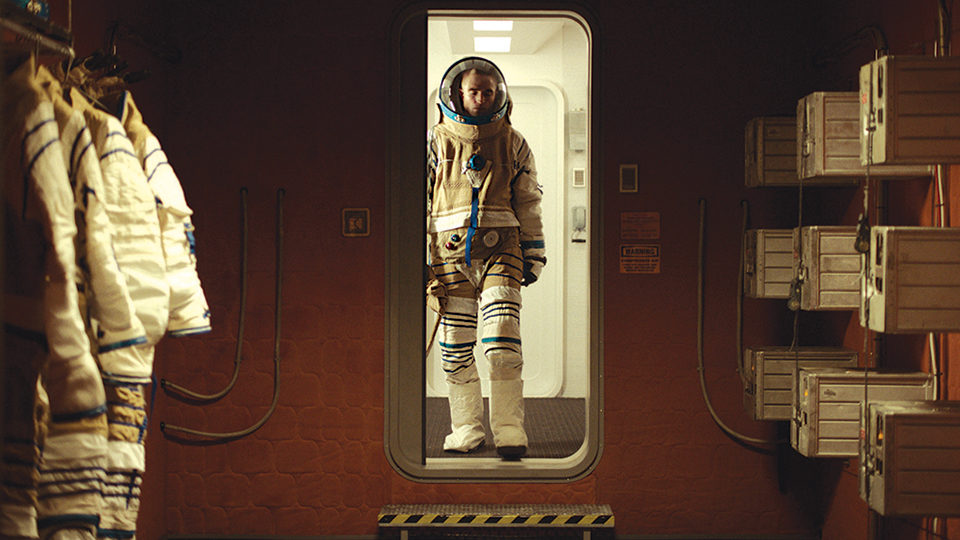
Courtesy of Wild Bunch & A24
Denis doesn’t keep only her own counsel, of course, nor does she operate in a vacuum—in fact few working filmmakers have been so consistent in their collaborators. Agnès Godard, her regular cinematographer, has shot over half of Denis’s features—though High Life was handled instead by frequent Olivier Assayas DP Yorick Le Saux. Other old hands abound: despite early reports that the film’s screenplay would be a collaboration with Zadie Smith—Denis refers to her curtly as “an English writer who I was advised to work with”—she reunited with frequent co-scenarist Jean-Pol Fargeau, who, speaking over the phone, remembered first meeting Denis after a cold call back in 1985, when he was writing for theater; this contact resulted in his first film, and hers, Chocolat (1988). “We have these questions about telling stories, escaping stereotyped storytelling,” says Fargeau, explaining their instant rapport, “and I think this is what makes us a team.” This go-around, the job called for an immersion in the science of science-time, with Fargeau paging through Stephen Hawking and consulting with astroparticle physicist and black hole specialist Aurélian Barrau.
Working with Denis, per Fargeau, involves a lot of conversations, often only tangentially related to the topic at hand, and often involving books being pulled from the shelves. This is echoed by another member of the Denis company: the composer of High Life, Stuart A. Staples, longtime frontman of the Nottingham-born outfit Tindersticks, with whom she has been working, either as a band or with individual members, since she recruited the group to record the soundtrack of her 1996 Nénette et Boni. For Staples, the process is a combination of the familiar—by now, he says, “the ideas flow in a discreet, unsaid sort of way”—and the unknown. “We’re always pushed into a different place,” he says of the markedly different nature of each collaboration, “and I think that’s fed into our longevity as a band; that’s made us explore the extreme corners of our musicality, in a way.” In the case of High Life, a film some five years in the making, much of the music was recorded before the film was shot. The concept for the score, says Staples, originated in the allure “of a particular way of working,” first explored in a commission to create soundscapes to be used in the In Flanders Fields Museum, a First World War museum located in a 13th-century merchant’s hall in Ypres, Belgium (released as an album in 2014). “What fascinated me was this idea of creating some kind of artificial void,” he says, “something you felt all the time. Within that I wanted to work with musicians in isolation, giving them start points and end points that were kind of arbitrary, so when these performances were brought together they created different relationships.”
Staples’s distinct, pained baritone is absent from the soundtrack—it’s instead Pattinson who handles vocals on the closing- credits song, a lullaby written by Staples during tour downtime. The film is Denis’s first time working with the actor, as well as her first time making a movie wholly in English—though her 2001 Trouble Every Day, whose cast included Americans Vincent Gallo and Tricia Vessey, was perhaps 50/50. Talking after the movie’s NYFF press screening, Pattinson recalled Denis introducing the late Joy Division frontman Ian Curtis, another young father of unpromising background, as a frame of reference. Denis cites other influences on the character, including reading Romeo and Juliet on the set in English, which inspired her to give father Capulet’s griping endearment of “baggage” to Monte. “There is so much tenderness in Shakespeare’s way, expressing this most sweet tenderness in a horrible situation,” she says. “‘One little body.’ It’s almost an incestuous way to speak to his daughter!”
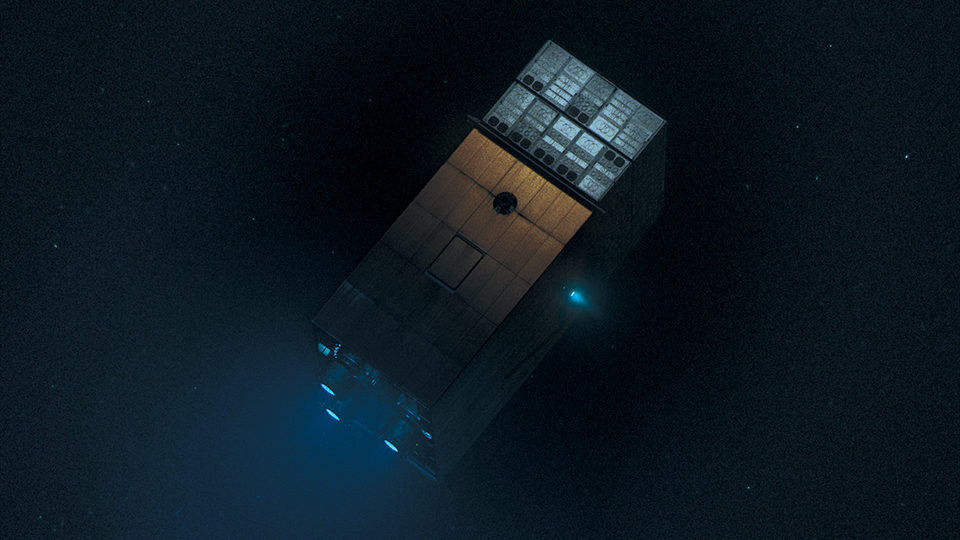
Courtesy of Wild Bunch & A24
This sense of a discomfiting familial intimacy is important to High Life, which leaves us lost in space with a father and daughter settled into domestic partnership, the girl ripe to be a bride, severely delimited in her scope of choice. There are few strong mother and child relationships in Denis’s films, as opposed to the intense relationships between fathers or father figures and their children, literal and otherwise, in works like Nénette et Boni, 35 Shots of Rum (2008), and now High Life. When I note this fact, she readily assents, tracing this to a lineage from her own mother’s relationship to her father—Denis’s grandfather—a painter, a motorcyclist, and altogether a dashing and extravagant man. “My mother raised us as if we were the descendant of a sort of lost king who died from the bronchitis in a dark winter,” she says. “My father was a great man, we really liked him a lot, but for my mother, there were human beings and there was God, the mortal and immortal, and her father was…”
At the time of our conversation Denis was not far removed from the death of her mother. She was slated to return to Paris after NYFF to go through her apartment with her brother and sister, and to handle the affairs that follow a death in the family. The subject arose as we discussed the supreme centrality of sex in her films, which prompted her to matter-of-factly recollect her mother’s passing amid the shoot of High Life: “I was holding her in my hands, so light with her little bones, and I can say of this old woman dying in a bed that I knew she was still interested in sex. There is nothing more alive.” She goes on to speak of a grandfather in the First World War, of stories of nurses masturbating injured soldiers in hospital: “You can’t say that in a ceremony celebrating the soldiers, but it’s so human,” she says. “I think it’s touching.”
Something relating to these scenes appears in High Life, in which a dying man is seen croaking out a plea for pleasure from his deathbed, clinging right up to the very precipice of oblivion to the life force as represented by sex. Sex drive and death drive, twined together throughout High Life, seem to merge here, as they do on a grander scale in the film’s ambiguous climax, a teetering on the edge of penetration that might be taken as consent to suicide or an invitation to consummate, having reached the age of consent. It is a vision both carnal and cosmic, sacred and profane—and there is no other filmmaker who could’ve brought us to this particular, precarious point.
Nick Pinkerton is a regular contributor to Film Comment and a member of the New York Film Critics Circle.







